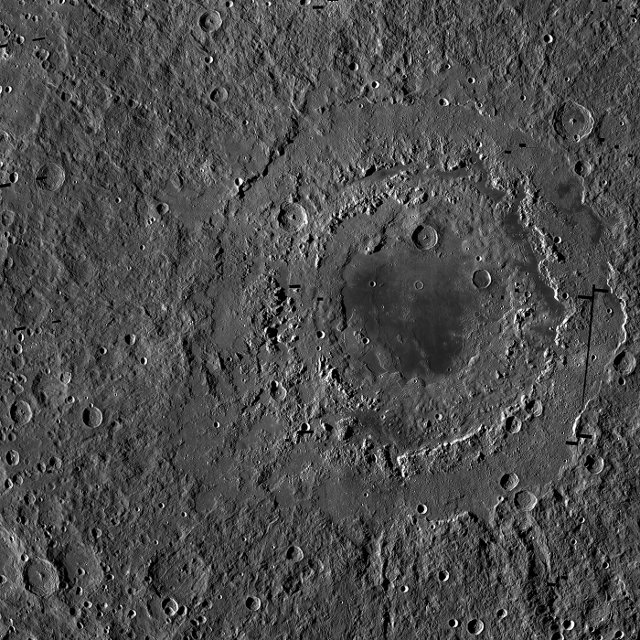
Two articles published in the journal “Science” provide new information about the birth of Mare Orientale, a big impact basin on the Moon. Researchers used data collected by NASA’s GRAIL mission to reconstruct the formation of Mare Orientale, helping to better understand how impact craters with concentric circular structures form.
Mare Orientale, also known simply as Orientale, is difficult to see from Earth because it’s on the border of the Moon’s visible side. It has a diameter of a little more than 900 kilometers (560 miles) and is the result of an asteroid impact that created the most recent lunar basin of that type. In this case, recent means that its age is estimated at 3.85 billion years.
The concentric circular structures give this type of crater a characteristic bull’s eye shape but its origin was hitherto little known. Craters of this type have been discovered in various parts of the solar system but more information were needed on the structure of one of them under the surface. In the case of Mare Orientale, this type of information was available among the gravity data collected in recent years during NASA’s GRAIL (Gravity Recovery and Interior Laboratory) mission.
One of the questions researchers still asked concerned the size and position of the crater initially produced by the impact generated Mare Orientale, which in the jargon is called transient crater. The bounce of the surface following the impact can eliminate all traces of the original basin.
The detections carried out by the GRAIL space probes showed that Mare Orientale’s transient crater is located between the two inner rings and has a diameter between 300 and 500 kilometers (180 to 310 miles). The researchers estimated that the collision excavated at least 3.4 million cubic kilometers (816,000 cubic miles) of rocks.
The data collected by the GRAIL space probes allowed to create computer models and simulations of the event that generated Mare Orientale. The researchers tested various possibilities and the one that matched in creating the crater had an asteroid with a diameter of about 60 kilometers (about 37 miles) traveling at 15 km/s (about 9 mps).
Thanks to these simulations, it was possible to provide an explanation to the formation of concentric rings of craters like Mare Orientale. After the impact, the crust bounced and the hot and fluid rocks underground moved deep in the impact area. The inward flow of materials caused fractures in the crust, which slipped outward creating the two most distant rings.
As for the innermost ring, the process was different and more direct, with a formation which occurred a few minutes after the impact in a very intense process. The materials pushed out after the impact formed a circular shape and generated that ring.
On the Moon, that type of crater is much better preserved than on other celestial bodies where there is geologic activity so it’s easier to study them. The GRAIL mission ended in December 2012 with the space probes crashing on the Moon but the data collected keep on being useful also for geological studies that concern processes that take place elsewhere too.


